TABLE OF CONTENTS
Apple’s 24” M1-based iMac is quite a polarizing product. Some adore its white bezels, its thin, metallic enclosure, and the many unique bells and whistles that it brings to the table.
Others, however, abhor certain design choices which were made in an attempt to cater to a broader audience and see no use in purchasing such a device.
The thing is, both opinions are valid. It is a unique device, and it does have a few debilitating flaws and limitations, but it’s also targeted at a very “casual” demographic — it’s marketed towards the “average” consumer, not someone who’s tech-savvy and needs the latest and greatest internals money can buy.
In that sense, it occupies a niche of its own; not too powerful but by no means incapable of getting your work done. It won’t suffice for the consummate professional, but it’s still capable enough for various different workloads.
As such, it’s not a good fit for every kind of user, and, well, naturally so — it’s hard to satisfy everyone’s needs and preferences.
And so if you don’t want to enter Apple’s closed-off ecosystem and yet you still need an all-in-one device that’ll deliver respectable (if not amazing) performance, what else might be up for consideration?
Fortunately, there’s a litany of devices that can not only match Apple’s iMac in the looks department but even outperform it in a wide range of tasks and workloads.
Before we get to our list, however, we really ought to analyze the many strengths and weaknesses of Apple’s 24” iMac — that way we’ll know how to best judge and benchmark all of its Windows-based alternatives!
24” iMac — Strengths and Weaknesses
This, in short, is one of Apple’s most divisive products.
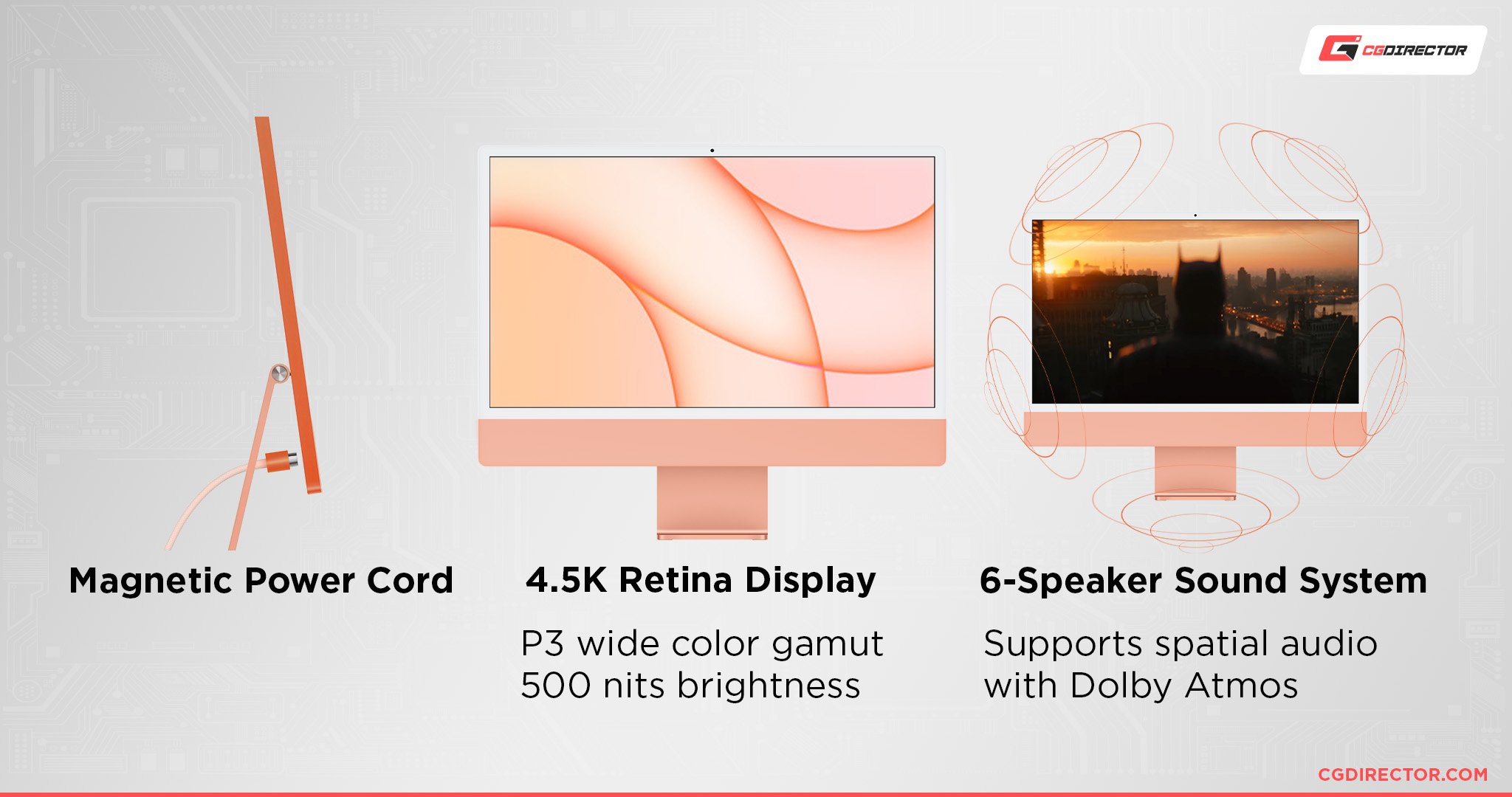
Source: Apple
As such, it simply has to come with a wholly unique set of pros and cons, all of which can be found down below:
- A stellar all-in-one package — Apple’s iMac was and still is the gold standard for all-in-one computers. There’s just no other AIO out there that is as well-rounded and beautiful, as cohesive and polished. It might be expensive, but for some, it may well be worth the asking price.
- A stunning 4.5K display — You can think of the 24” M1-based iMac as a beautiful, color accurate 4.5K display with a Mac Mini crammed deep within its enclosure. It’s a spectacular package all things considered. It’s not astoundingly powerful, but is nonetheless powerful enough for most tasks you might want to throw its way. As for its display, it’s every bit as good as Apple says in its marketing material.
- Jaw-droppingly beautiful — Slim and alluring, the 24” iMac is (arguably) one of the most beautiful machines you’ll ever lay your eyes on. It’s not to everyone’s taste, obviously, but you cannot dispute its looks. Sleek, impossibly thin, and yet much more powerful than its friendly color palette would ever imply. Quite the mix!
- Fairly advanced and capable — The M1 chipset might not be all that groundbreaking two or so years into its life cycle, but it’s still an incredibly capable SoC, one that can handle everyday tasks with staggering ease. Photo and video editing, graphic design, and similar tasks that involve content creation are an absolute joy!
Its biggest weaknesses, however, are a bit too debilitating. Some of them are relatively acceptable; others may well end up being total dealbreakers.
- Severely limiting I/O — You only get two or, at best, four USB-C ports (two of which are always Thunderbolt 3).

Image Credit: Apple
No more, no less. That’s… austere, to say the least. Even if all of your peripherals and external media are USB-C, that’s still a limiting selection of ports (an understatement). Now, you can buy third-party accessories like this one, but that’s yet another thing you have to worry about and spend money on. If you’re okay with that then sure, you’ll have a much more versatile machine than Apple intended, but it’s not what we would label as an optimal experience (nor is it consumer-friendly).
- Lack of upgradeability — There’s no way whatsoever to upgrade the 24” iMac whatsoever.

Source: Notebookcheck
Need more CPU power? RAM? Graphics performance? Internal storage? Well, you’ll pretty much have to sell your iMac and buy an entirely new device. For some, that’s totally okay. For others, it is an absolute dealbreaker (and naturally so). Just keep that in mind as this iMac, beautiful though it is, doesn’t come cheap.
- The base model cuts too many corners — It has no Ethernet port on its external power adapter, it comes with one less GPU core, it only has two Thunderbolt 3 USB-C ports, it doesn’t have Touch ID built into the keyboard, and, to make things even worse, it only comes with a single fan instead of two which are reserved for the higher-end models. Does that result in a performance hit and higher fan noise? It sure does. That’s just not a good or a versatile enough computer to warrant the asking price. Now sure, it looks great and performs a lot better than you would expect given its petite frame and overall thinness, but it’s still a bit too limiting for even the most casual user.
- Nearly impossible to repair — If one of its components happens to malfunction, you’ll either have to sell the whole thing altogether or have it repaired for an astonishingly large sum of money. That’s… sub-optimal, to say the least. Now, to be fair, much of the same can be said for Windows-based AIOs as well but the point stands nonetheless; it’s something you really ought to keep in mind.
24” iMac Alternatives — Pros and Cons
All iMac alternatives listed below have no huge dealbreaker worth noting. They’re essentially Windows PCs in a wholly unique form factor. Nothing more, nothing less.
There’s no inherent drawback that relates to its hardware or software, no emulation layer to speak of, no software compatibility issues for you to tackle and troubleshoot, no catch that might pop up further down the line.
As such, they are definitely a more well-rounded package when compared to Apple’s hugely popular AIO. They’re still limited when it comes to upgradeability, although that, too, varies from one device to another.
In any case, most of these Windows-based alternatives come packed with desktop-grade components, so you’re never going to lack the horsepower to get your work done.
Note: Some of these AIOs still haven’t been updated with the latest and greatest CPUs from Intel and AMD.
That means they won’t be quite as powerful as we’d like. So, just to be safe, make sure to read the fine print each and every single time before making any kind of investment!
Best 24” iMac Alternatives
With all of that out of the way, let’s take a closer look at some of the most interesting (and, thus, noteworthy) 24” iMac alternatives (listed in no particular order)!
HP Envy 32
A staggeringly beautiful (and surprisingly capable) AIO, one that packs a stunning 31.5″ display with HDR 600 support along with 600 nits of peak brightness.

Image Credit: HP
Better yet, it covers 98% of the DCI-P3 color space and has an anti-reflective coating, making it excellent for all color-critical work.
Add to that a built-in wireless charger, speakers tuned by Bang & Olufsen, and a suite of ports that puts everything the 24″ iMac has to offer to shame, and you get a spectacular device that’s bound to satisfy your needs.
It still hasn’t been updated specs-wise, but that, too, will probably change once HP decides it’s due for a refresh!
A good thing, however, is that its RAM and storage can easily be upgraded by removing the small toolless panel on the back. It might not feature Intel’s latest processors, but weak and incapable it certainly is not!
Lenovo Yoga AIO 7
The Yoga AIO 7 from Lenovo is, one could argue, the very best iMac alternative out there — at least at the time of this writing.
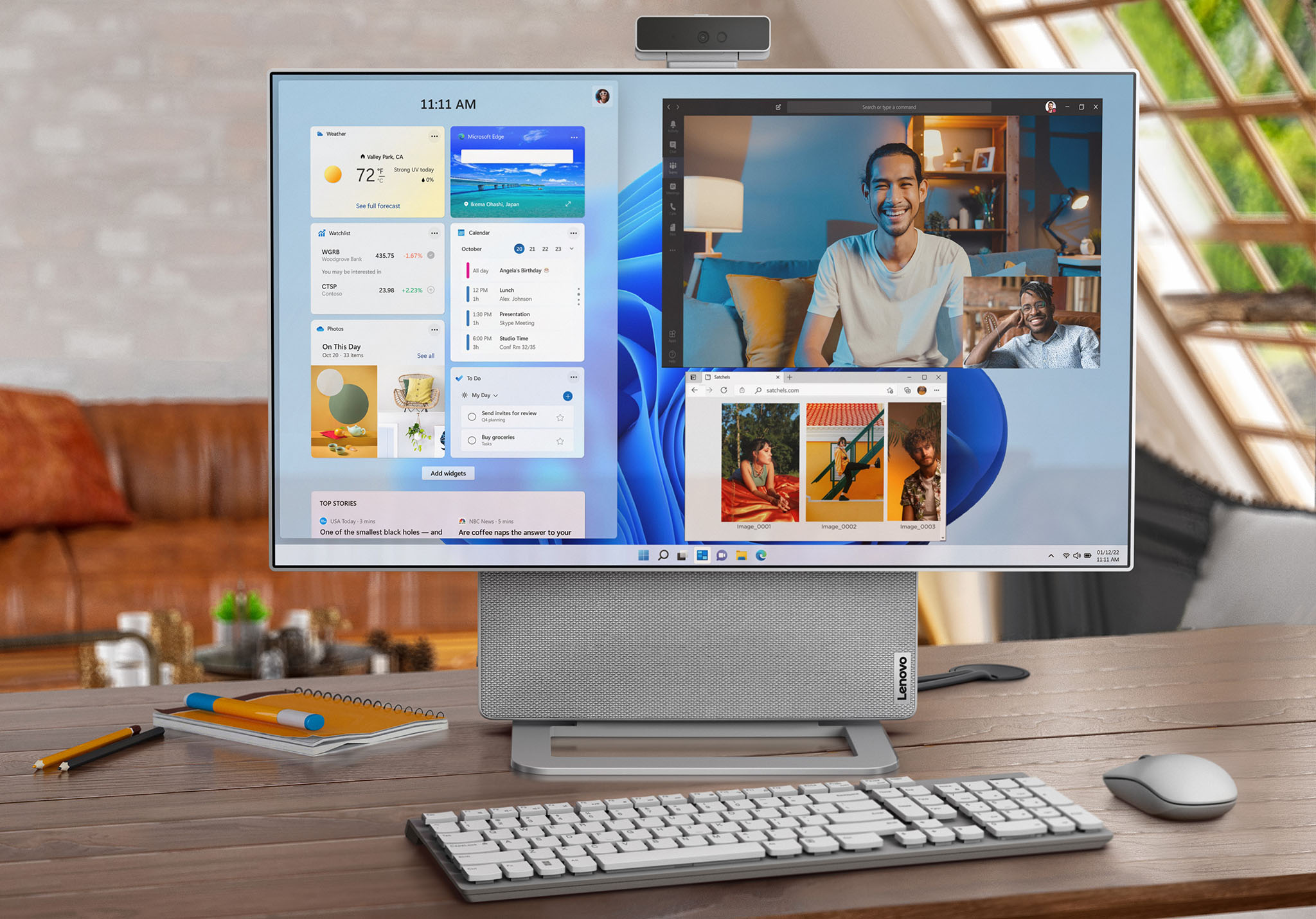
Image Credit: Lenovo
Not only does it come with one of AMD’s most recent Ryzen 6000 series APUs but also has a dedicated GPU (RX 6600M with 8GB of GDDR6 VRAM). That, in addition to 16GB of LPDDR5 RAM and a beautiful 27″ 4K touch display makes it a beastly AIO!
Wi-Fi 6 and Bluetooth 5.1 are just there to sweeten the deal, and so is a free three-month subscription to Xbox Game Pass (depending on the region and SKU) — in case you want to put that stellar GPU to use!
It, too, features a color-accurate display (99% Adobe RGB, 99% DCI-P3), so it’ll deliver no matter your workflow — video and photo editing, graphic design, you name it.
At $1,459 it’s not exactly cheap, but it’s a much better deal than anything Apple has to offer.
If that’s perhaps a bit too powerful for your needs, Lenovo has other stellar options as well.
IdeaCentre AIO 5i Gen 7 [24” and 27”]
Next up, we have two incredibly interesting AIOs, both of which come packed with Intel’s latest and greatest internals — for better and worse.

Image Credit: Lenovo
“Team blue’s” Core i7-12700H is a known (and most impressive) quantity. Its dedicated Arc graphics, on the other hand, are less impressive.
Still, they’re much better than one would expect, and will definitely suffice for a bit of light gaming on the side or, say, 4K video editing.
The bigger 27” model comes with the A370M, whereas the 24” one features the slightly less capable (fur still fairly acceptable) A350M. These aren’t as good as any GPU that NVIDIA or AMD have to offer but are nonetheless good enough.
Their displays are perhaps what’s most interesting: they’re QHD, touch-sensitive, and have a 100Hz refresh rate.
That’s… a very nice surprise, all things considered, and also a feature that Apple selfishly reserves for its best and most prominent offerings (namely the 14″ and 16″ MacBook Pros and top-of-the-line iPhones and iPads).
These two AIOs from Lenovo might not be as powerful as the Yoga one listed above but they’re still exceptional machines that’ll excel in all but the most demanding of workflows.
Note: Their availability may vary depending on the region.
Huawei MateStation X
The Huawei MateStation X isn’t quite as powerful as the Yoga AIO 7, but it sure can stand its ground in the aesthetics department.
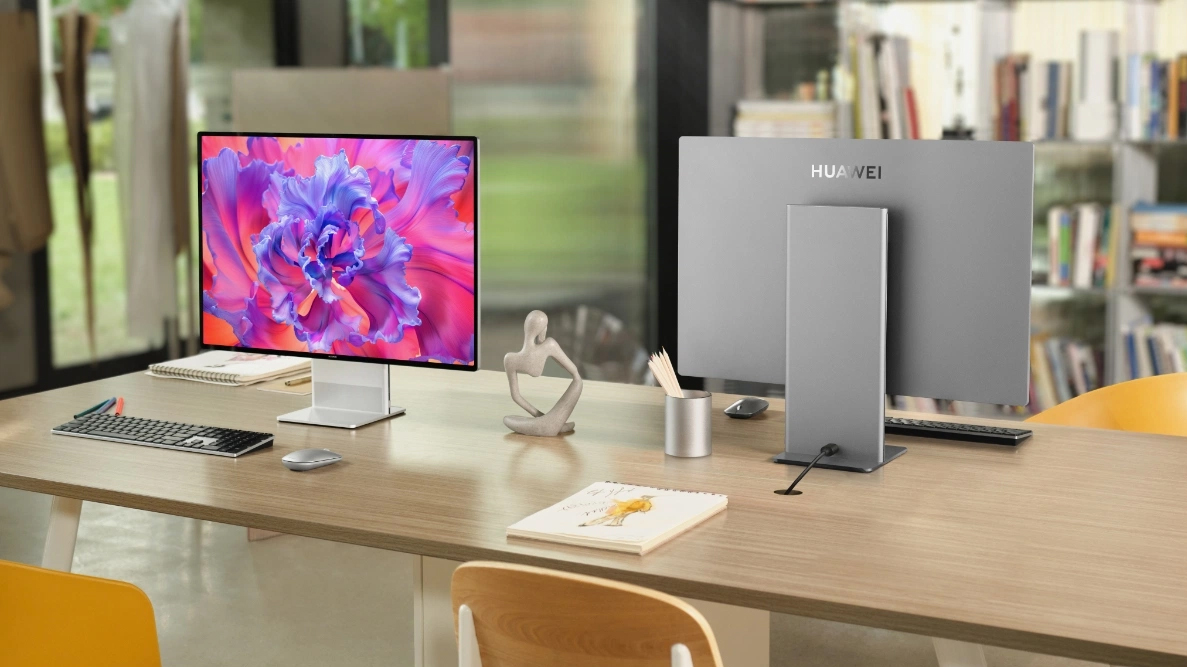
Image Credit: Huawei
In fact, one could argue that it’s a slightly better productivity machine, what with it having a beautiful 3:2 28.2” display — a sensational aspect ratio that’ll serve as a boon to anyone spending hours browsing the web, filling out spreadsheets, typing out emails, and so on.
Other than that, it comes with all the nifty bells and whistles as its direct competitors: a high-res display, 10-point multi-touch support, smart connectivity features (only if you’re a part of Huawei’s Apple-like ecosystem), an 8-core, 16-thread CPU from AMD (5000 Series Ryzen), etc.
It’s not as alluring a package but is nonetheless worth being on this list.
Dell Inspiron 27 7000
If you want a relatively cheap iMac alternative, the Inspiron 27 7000 from Dell should definitely be on your radar.
It’s not a powerhouse by any stretch of the imagination, but it’s still good and capable enough to handle any day-to-day tasks you might throw its way.
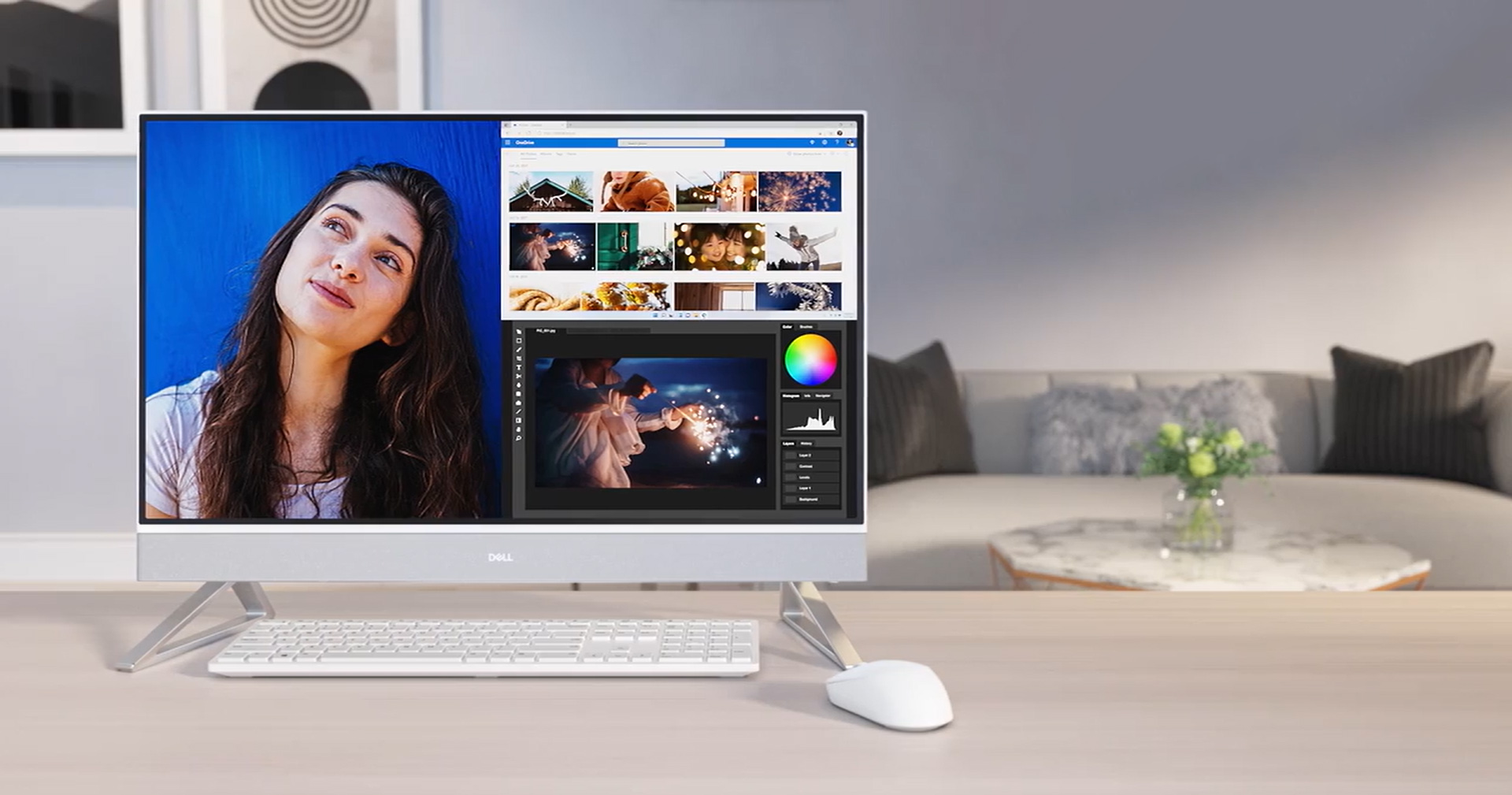
Image Credit: Dell
The best CPU you can get it with is the Intel 12th Gen Core i7-1255U which, while by no means a speed demon, is still potent enough for most tasks the average user wants to perform.
With up to 32GB of RAM and 1TB of NVMe storage, you’ll be able to tackle most regular (i.e. not overly intensive) workflows with aplomb.
The only downside is that it features an FHD panel which, at 27″ inches isn’t what we’d consider optimal. Fortunately, at least it’s a touch panel — a silver lining, no doubt.
Microsoft Surface Studio 2+
The Surface Studio 2+ is a polarizing product, much like its predecessors.
On the one hand, it’s a spectacular AIO, one that can only be described as a content creator’s dream.
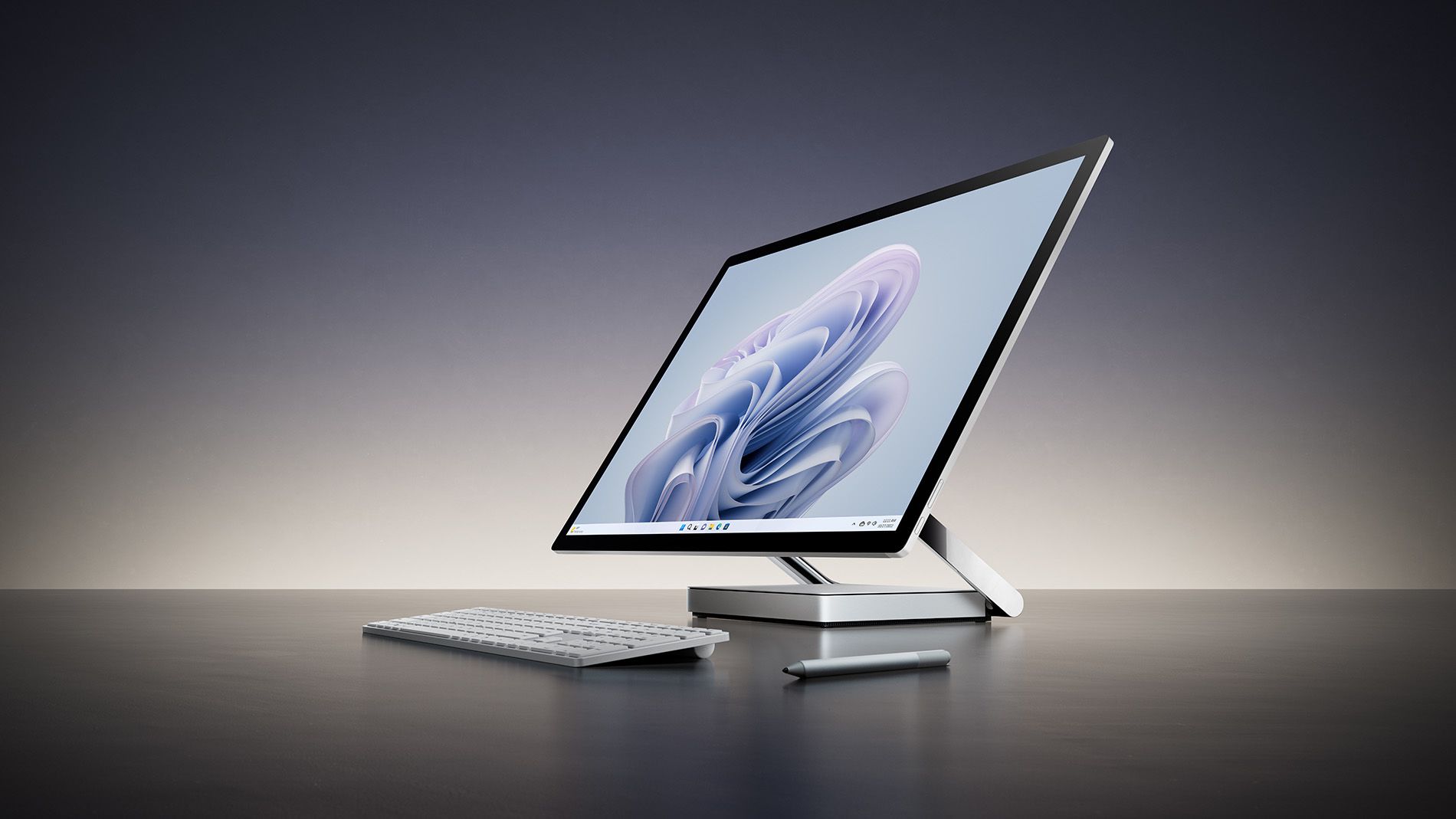
Image Credit: Microsoft
28″, 3:2 aspect ratio, a “Zero Gravity” hinge that can effectively turn this humongous panel into a drawing tablet — what more could you ask for? It also comes with a variety of ports, including three Thunderbolt 4 ports.
It’s not all sunshine and rainbows, though: it comes with a capable albeit still unimpressive 11th Gen Core i7-11370H and an NVIDIA RTX 3060 GPU (6GB of GDDR6 VRAM).
Now, by no means are these specs bad, but you’d still expect something a bit more cutting-edge for a device that sells for over four thousand dollars.
That, as crazy as it sounds, was not a typo. Buying last year’s tech for nearly five grand is absolutely ludicrous, no matter how nice or versatile said device might be.
Is it a great tool for creatives and illustrators? Absolutely, but you can buy a lot of (equally incredible) tech for that kind of money.
Be that as it may, it’s worthy of being on our list, even with its laundry list of flaws and drawbacks.
24” iMac Alternatives — Are They Worth It?
They absolutely are, depending on your needs and preferences.
First of all, if you want to use Windows, you have to go with one of the aforementioned all-in-one PCs. There’s no other alternative.
Running Windows through Parallels or VMWare is an option, but it’s not something you’ll enjoy doing on a daily.
These AIOs are great, there’s no doubt about it, but whether they’re worth the asking price is heavily up for debate.
Building a small form factor PC is almost always the better option from a price-to-performance standpoint, but such a device will never be as integrated and “cohesive” as an AIO.
If you just want the iMac’s form factor, then there’s a myriad of Windows-based devices that can offer a nearly identical experience — and they’re often a fair bit more powerful, too!
Conclusion
Apple’s iMac, while undoubtedly amazing for a select few workloads (and regular day-to-day tasks), definitely has viable alternatives over in the Windows world.
These might not be as attractive or well-rounded, but they sure are a lot more powerful and, in certain cases, upgradeable.
They don’t cut any corners nor do they impose arbitrary (or, even worse, software-based) limits on the user. They don’t force you to enter a closed-off ecosystem. They’re basically Windows computers transformed and transmuted into a wholly unique form factor — one that is no doubt mighty alluring.
If you’re a videographer, photo editor, or graphic designer — or just want an astonishingly beautiful machine to embellish your workspace with — then Apple’s iMac is, one could argue, without equal.
Its M1 chipset, while by no means as novel or groundbreaking as it was two years ago, is still incredibly capable (especially considering its power envelope). Add to that a jaw-dropping display and a build quality seldom replicated, and you have yourself a “killer” machine for content creation.
If, however, you’re not a content creator of any kind, then going with a Windows-based AIO does make a bit more sense. These computers are never cheap, so also give some thought to whether building a small form factor PC makes more sense — especially from a financial perspective.
Another huge benefit is the fact that you’ll be able to connect whichever monitor you so desire — you’ll have total control.
FAQ
Let’s go over a few potential questions you might have regarding this particular topic:
Are There Any Windows Alternatives to Apple’s iMac?
Absolutely! In fact, there are many of them!
The HP Envy 32 and Lenovo Yoga AIO 7 stand out in this regard, but there’s a much broader list of options out there.
It all depends on what you need from such a device and how long you plan on using it. Be that as it may, those two are the most versatile and capable of the bunch — heck, they even come with dedicated graphics!
Are iMac Alternatives Worth It?
They definitely are. Buying one of these AIOs would net you a whole lot more for your money — more RAM, more storage, and, depending on the AIO, a dedicated graphics card.
These are no small benefits. And, better yet, they’re sometimes sold for less than Apple’s 24” iMac. That’s the very definition of a good deal.
Can You Install Windows on an iMac?
You can, but it’s not as easy as it was in the past. You’ll have to use a program like Parallels or VMWare.
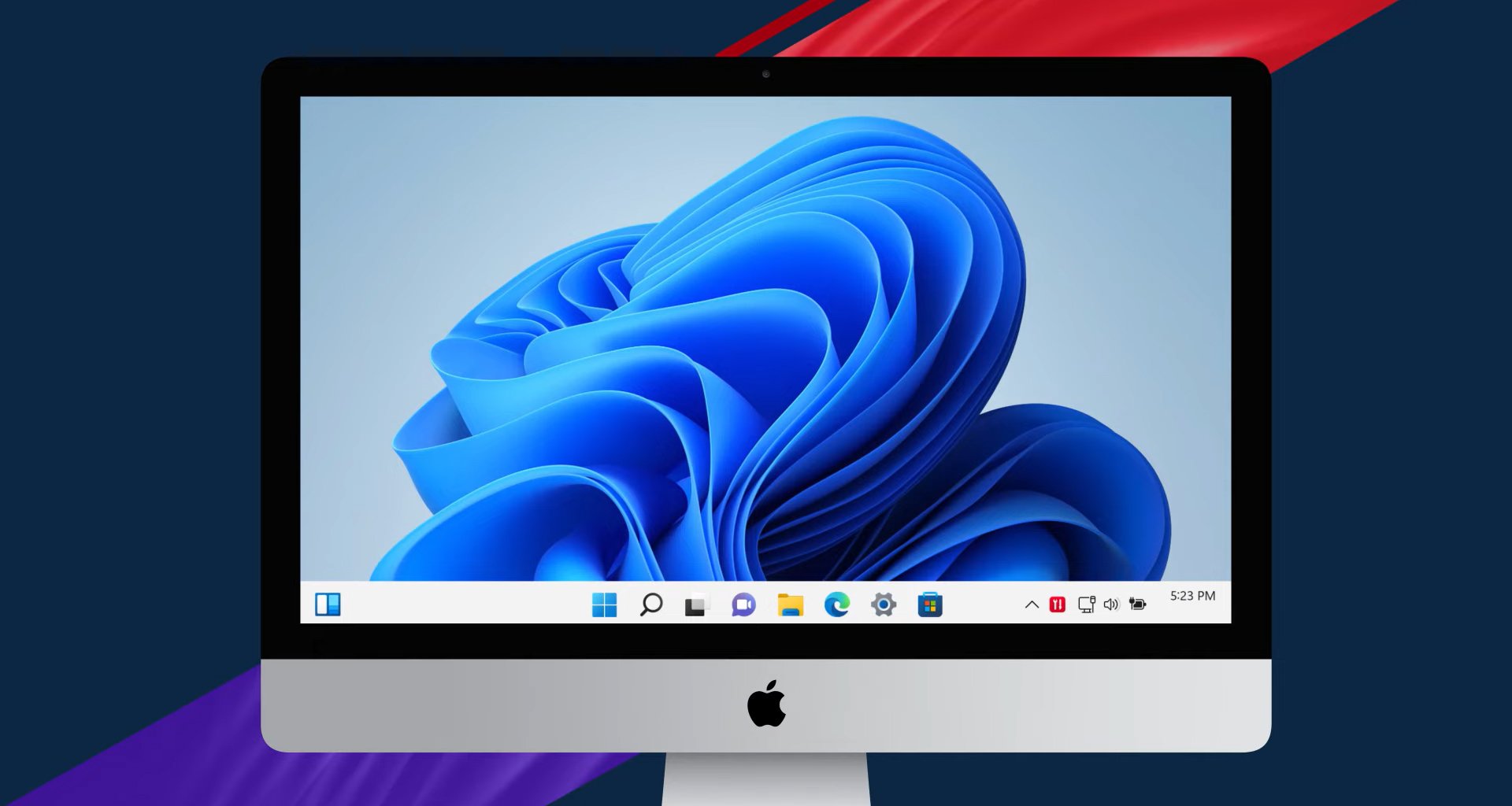
Image Credit: Parallels
The good news is that Windows will run about as fast as you expect it to.
The bad news, however, is that you’ll be limited to the ARM version of Windows which, depending on your needs and overall use case, might be a dealbreaker.
Are All-in-One Computers Worth It?
That depends. You could definitely build a cheaper small form factor PC that would dwarf any AIO on the market performance-wise.
That being said, an SFFPC, no matter how small or powerful, will never be as cohesive a device (not to mention beautiful) as an all-in-one computer.
You lose out on power but gain in aesthetics and, perhaps most importantly, practicality. Although that, too, is somewhat debatable.
The good news is that AIOs are no longer as expensive as they were in the past, so depending on your needs and budget, they may well be worth it!
Over to You
Have you ever considered buying an AIO and, if so, why? Let us know in the comment section down below and, in case you need any help, head over to our forum and ask away!
![Best iMac Alternatives in 2023 [That are cheaper & better] Best iMac Alternatives in 2023 [That are cheaper & better]](https://www.cgdirector.com/wp-content/uploads/media/2023/01/Best-iMac-Alternatives-Twitter-1200x675.jpg)
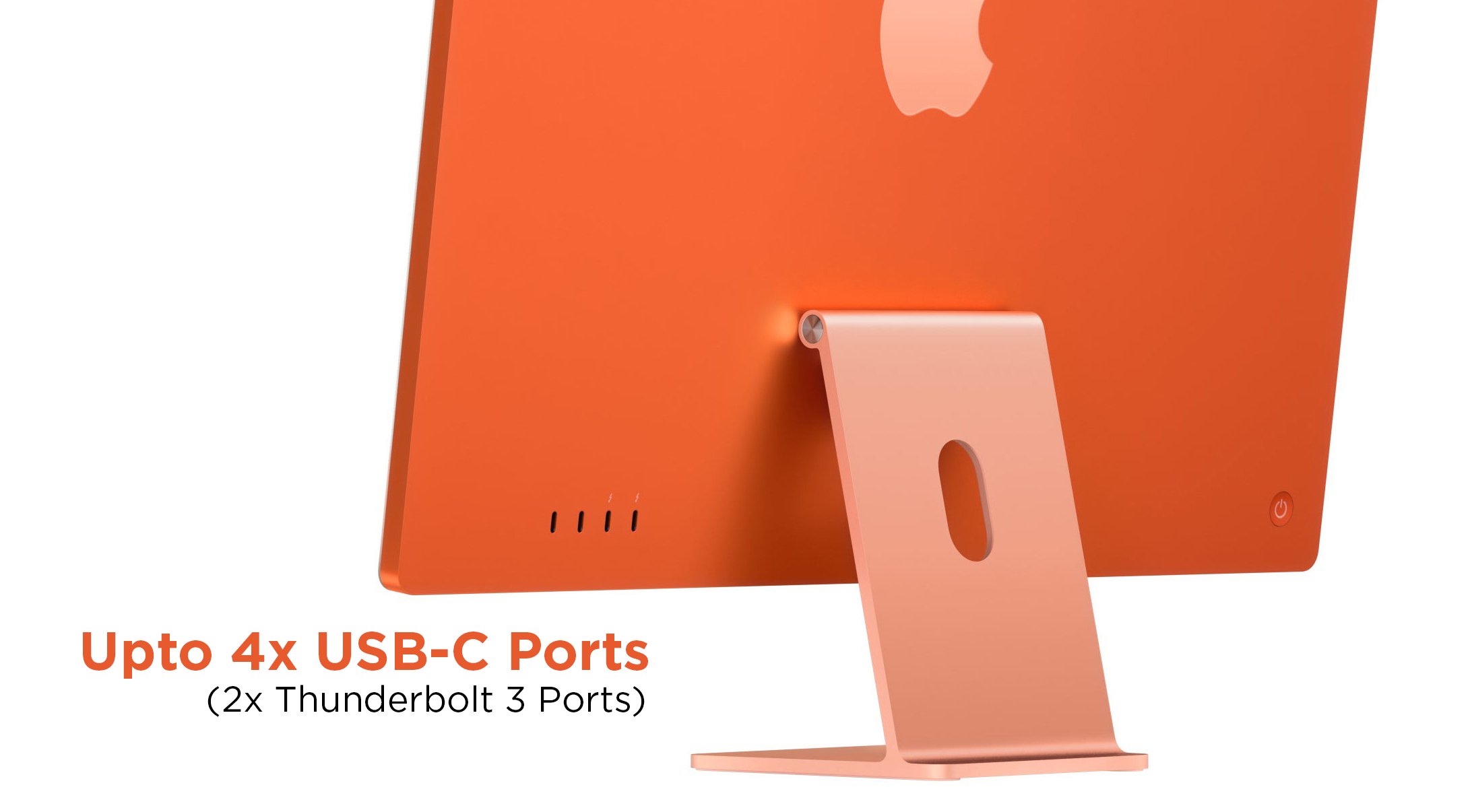
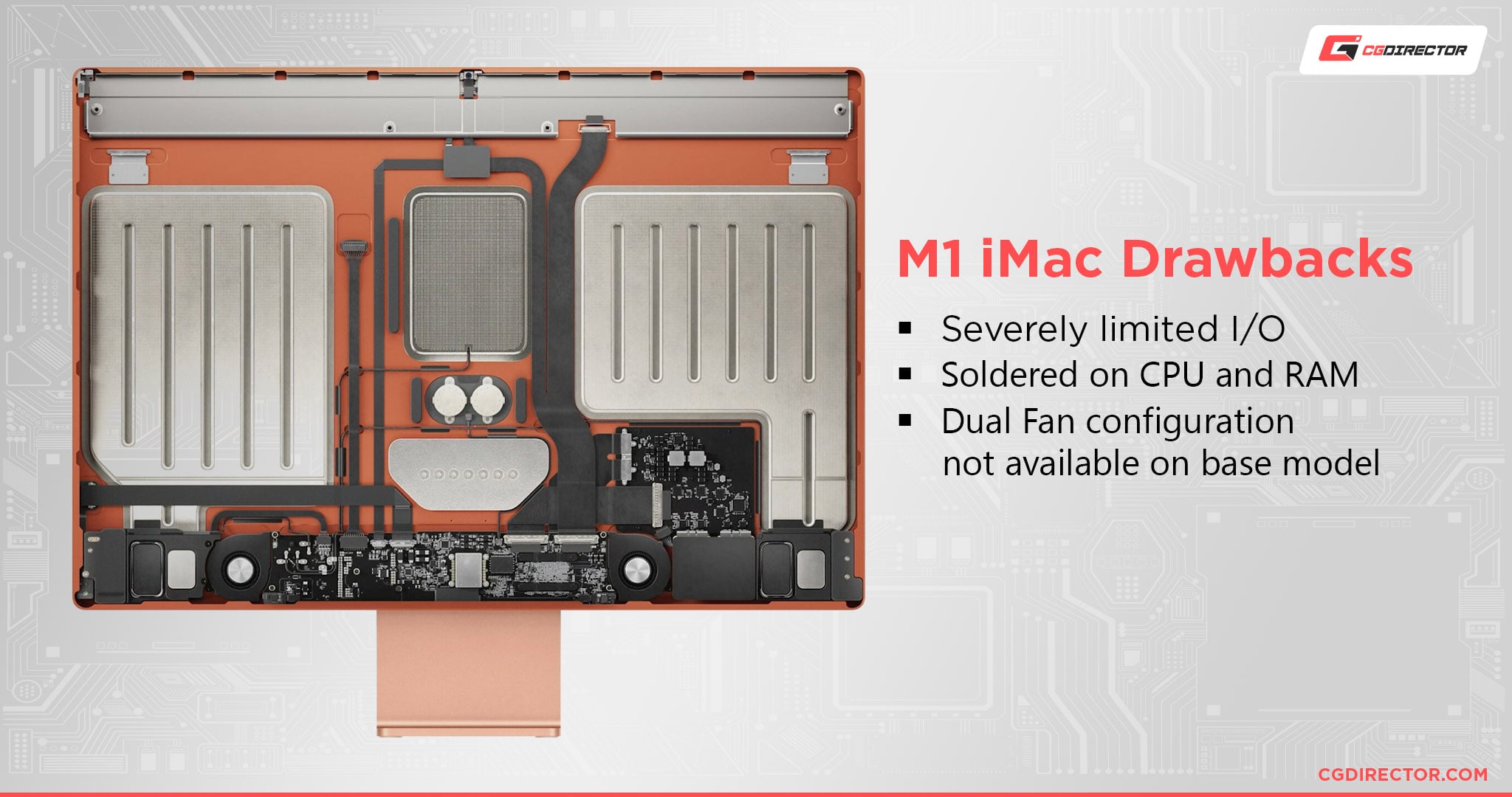
![Which Mac Is the Right Desktop Computer for You? [Update] Which Mac Is the Right Desktop Computer for You? [Update]](https://www.cgdirector.com/wp-content/uploads/media/2023/11/Which-Mac-Is-the-Right-Desktop-Computer-for-You-Twitter-594x335.jpg)
![How to Shut Down Applications in macOS [The Easy Way] How to Shut Down Applications in macOS [The Easy Way]](https://www.cgdirector.com/wp-content/uploads/media/2024/01/How-to-Shut-Down-Applications-in-macOS-Twitter-594x335.jpg)
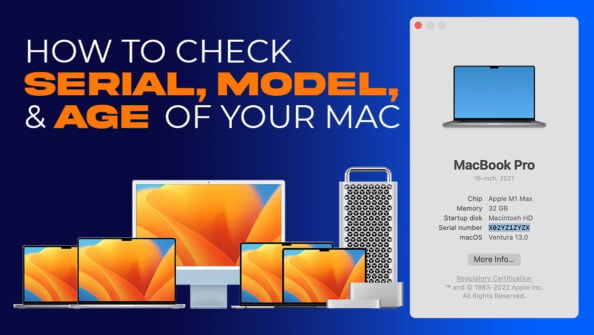
![Are M3 MacBooks Worth It / Worth the Wait? [2024 Update] Are M3 MacBooks Worth It / Worth the Wait? [2024 Update]](https://www.cgdirector.com/wp-content/uploads/media/2023/05/Should-You-Wait-for-the-M3-MacBooks-or-Buy-an-Older-Model-Twitter-594x335.jpg)

0 Comments